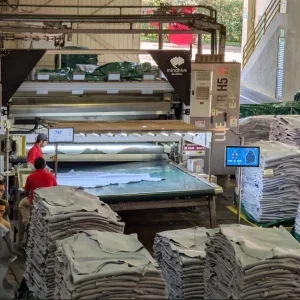High costs and a shortage of hide, skins and leather are posing a threat to the growth of India’s leather sector, according to industry leaders.
R K Jalan, chairman of the Council for Leather Exports, claims governmentimposed regulations on the export of hide, skins and leather, in line with WTO regulations, are responsible. Presently, there is a 60% export duty on raw hides and skins and semi-processed leather such as wet blue, crust leather, as well as a 15% tariff on vegetable-tanned leather.
However, in accordance with standards set out by the directorate general of foreign trade, there is no export duty on finished leather due to it being classified as a value-added product. The regulations, which have been in place for 13 years, have proven to be problematic, as it is impossible for customs to determine on sight whether consignments are finished leather or not, demanding further tests.
Jalan claims that through taking advantage of this opening, some exporters are illegally exporting semi-processed leather in the guise of finished leather, thereby evading the 60% export duty and reaping other benefits, including duty drawbacks and focus product scheme scrip.
"The illegal export causes significant revenue losses to the government and has led to a shortage of raw material in the country," he said. "This has affected the price competitiveness of the Indian leather industry."
In response, last year, the Council for Leather Exports (CLE) made a request to the commerce and industries minister to check for clandestine exports of semifinished leather under the veil of finished leather.
The CLE is coordinating with customs to ensure a smoother and quicker implementation of the system. Between April 15 and July 5 of this year, a total of 887 consignments of leather were tested by the Central Leather Research Institute (CLRI) at notified ports – except for Mumbai, where the system is yet to be put into practice.
The export of leather products grew by almost 10% in April and May 2013 compared to the same period in 2012.
Jalan added: "We are confident that if the current system [effective from April 15] is strictly implemented at the designated ports, it will result in growth of almost 20%, despite recessionary trends in the European market, which contributes almost 65% of exports from the country."
The GOI has been collecting export duty since April 2013 on unfinished leather and wet-blues at Chennai, New Delhi and other locations.






